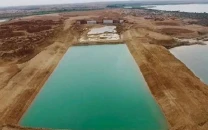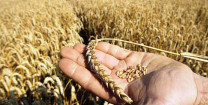Looming water scarcity due to changing weather patterns
Pakistan is fast shifting from a water-stressed to a water-scarce country.

The report makes it clear that there has been substantial climate change, and that the natural calamities Pakistan experienced two years in a row were not unforeseen events. Dr Leena Srivastava, in a recent research paper, provides evidence that some Himalayan glaciers are melting more rapidly than the global average due to climate change. This has led to an increase in the frequency of floods in the short run, and might exacerbate water shortages in the long run due to reduced river flows in South Asia.
In Pakistan, water scarcity is a particularly critical crisis. Millions of Pakistanis today lack access to clean drinking water, and the situation is worsening day by day.
According to a World Bank report released in 2006, Pakistan was fast shifting from being a water-stressed country, to a water-scarce country; primarily because of high population growth, over-exploitation of ground water, pollution, poor repairing of water infrastructure, and no financial sustainability of the water management system.
According to a 2009 study by the Woodrow Wilson Centre in Washington, at least 90% of Pakistan’s fresh water is used for irrigation and agriculture, while intensive irrigation and poor drainage systems have caused waterlogging and soil salinity throughout Pakistan’s countryside.
The study forecasts that by 2025, Pakistan’s annual water supply will fall short of demand by around 100 billion cubic meters – about half of the entire present flow of the Indus river. America and Australia have dams that can hold 900 days worth of river run-off: Pakistan can barely store 30 days-worth in the Indus basin.
The United Nations has placed Pakistan among the ‘water hotspots’ of the Asia-Pacific region, saying the country is facing major threats of increasing water scarcity, high water utilisation, degrading water quality and climate change risk.
Water scarcity, when combined with the impact of climate change, could put huge stress on the economy of Pakistan in particular and South Asia in general. Major food shortages are likely with the increased recurrence of natural disasters and the large scale dislocation of populations.
The agricultural sector is likely to be the most sensitive to climate change. Fresh water availability is expected to be highly vulnerable to anticipated changes in climate; while the frequency and severity of floods will eventually increase in river deltas. Arid and semi-arid regions would also experience severe water stress.
Pakistan is fortunate to have received the largest irrigation system in the world, but water losses from the system are also the highest globally; due to which the agricultural sector has been affected as it cannot keep pace with the growth in population due to constant water shortages. Per-capita surface-water availability for irrigation was 5,260 cubic meters per year in 1951; however, this has been reduced to a mere 1,100 cubic meters per year in 2006.
Our weather patterns are changing; consequently, the frequency and severity of rains and droughts is increasing. The need of the hour is that the government understand the changing reality and make necessary preparations to deal with it.
There are at least three immediate steps that Pakistan needs to take in this context. First should be the resolution of ongoing issues with India over the use of resources decided under the Indus Water Treaty. Secondly, dams and reservoirs must be built to store water for better utilisation. Lastly, the government must organise campaigns to discourage outdated and wasteful irrigation methods.
Good management of the crisis requires close cooperation with India in increasing the efficiency of irrigation and water use, joint development of technologies, sustainable agricultural practices and institutional arrangements to manage food shortages as well as natural disasters.
Lastly, more familiar measures may include the construction of dams, brick lining of water channels and introduction of more efficient irrigation methods like sprinklers or drip irrigation. We must also formulate plans to recycle and reuse sewage water for irrigation purposes.
The writer has formerly been associated with the planning and research department of Pakistan International Airlines.
Published in The Express Tribune, May 14th, 2012.



















COMMENTS
Comments are moderated and generally will be posted if they are on-topic and not abusive.
For more information, please see our Comments FAQ